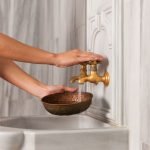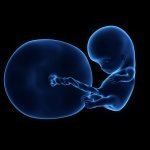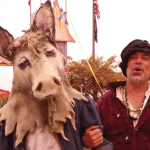Sussanna Czeranko, ND, BBE
The application of cold to the cutaneous surface, like that of other irritants, even if it be followed by dilation of the cutaneous vessels, causes an increase of blood pressure. Simon Baruch, 1908, p.49
Through the blood vessels and nerves of the skin and the connections they make with the nerves and blood vessels of the internal organs, practically every part of the body may be influenced by applications to the skin surface. George Knapp Abbott, 1912, p.27
Short cold applications to the skin, being followed by dilation of the surface vessels, favor perspiration; while prolonged cold applications have the opposite effect. John Harvey Kellogg, 1902, p.125
It may surprise modern-day naturopathic doctors that research on the properties of water therapies was seriously conducted by the early naturopaths to determine how the application of water actually affected the human body. Throughout my explorations of the naturopathic literature from a century ago, I am continuously amazed to discover the kinds and number of questions asked, the accompanying rigor to confirm clinical observations, and the scrupulous management of patient care – and all of this with 1 purpose in mind: to elevate hydrotherapy. I am left with reverence and appreciation for those early doctors who saw so clearly that water could impart a therapeutic reaction in the body in the management of diseases. Manipulating the body with water therapies has unfortunately not survived well amid the titillation of nutraceutical and drug options; however, let’s explore some of the work done a century ago and perhaps rediscover the wonders of water in our clinics today.
Wilhelm Winternitz, a Viennese hydrotherapist, conducted scientific studies of cold water to confirm its benefits. Many others also pursued questions of hydrotherapy and human physiology. Simon Baruch, for example, held Winternitz upon a high pedestal for his work in raising the standards in hydrotherapy. Baruch consequently dedicated his books to the memory of Winternitz. And there were many others to discover who also shared a keen interest in unraveling the mysteries of cold-water therapies. Often, though, when research of another was cited, there were far fewer of the diligent citations we associate with later and contemporary research documentation. It can be tricky to navigate and identify clues as to authors and locations of the studies. Invariably, we are left with a cited name, or possibly a year and a city. Locating the actual paper requires knowledge of the German language, as well as the time and patience for delving deeply into the historical records. In this article, I would like to explore the effects of water on human physiology, as frequently and persistently reported by the early hydrotherapists.
The Skin
In discussing hydrotherapy, Simon Baruch states, “The inference is as clear as day that an enormous influence must be exercised by procedures which impress such changes upon the caliber of the [blood] vessels, the action of the heart, and the composition of the blood in health; and that its effect in disease must be equally pronounced.” (Baruch, 1908, p.71) Baruch wrote often on the topic of hydrotherapy with one goal in mind: to establish hydrotherapy as a credible science among the rank and file of the medical profession of his era.
In one commentary, Baruch acknowledged his colleague, Dr Woods Hutchinson, Professor of Comparative Physiology at the University of Buffalo. Baruch notes, “[Hutchinson] … coined a word which is expressive of the propulsive action of the cutaneous vessels.” (Baruch, 1898, p.7) “Skin heart” is the term that Hutchinson used in the Boston Medical and Surgical Journal, November, 1897. (Baruch, 1898, p.7) The skin heart refers to a concept that peripheral small blood vessels are not static, but constantly reactive. Capillaries and arterioles had “an inherent tendency to rhythmic contraction all through the vascular system.” (Baruch, 1898, p.9) John Harvey Kellogg referred to the small arterial system as the peripheral heart. (Kellogg, 1902, p.57)
The active rhythmic movement in the capillaries and arteries aided the heart in propelling blood circulation. Kellogg later affirmed the statements made by Baruch. He writes, “The contraction of the heart, which gives the blood a propulsive impulse, is followed up by the contraction of the arteries … [and] the small arteries, or arterioles keep up a constant peristaltic action, by means of which the blood is urged forward.” (Kellogg, 1902, p.57) He remarked on the ability of arterioles to help maintain “just the right degree of tension or intravascular pressure through the narrowing of the arterial outlet” (Kellogg, 1902, p.58) and that they also helped peripheral circulation, alleviating the work of the heart. Following short, cold-water applications made to the body, “the increased activity of the small vessels aids the heart, while by the continuous contraction during a cold application, the labor of the heart is greatly increased.” (Kellogg, 1902, p.107)
Another observation noted with cold applications is the effect experienced in distal parts. Referred to as a “compensatory effect,” Kellogg references the work of Winternitz: “Winternitz has noted that placing the elbow in water at 50 °F [10 °C] for 30 minutes gives rise to an elevation of temperature in the axilla.” (Kellogg, 1902, p.108) The placement of a cold application produced definite reactions. Kellogg states a guiding rule: “Cold applications made across the trunk of an artery cause contraction in its distal portions.” (Kellogg, 1902, p.108) This effect helped hydrotherapists manipulate the movement of blood circulation.
How cold water applications were applied also had a significance in determining the perception by the patient. For example, a cold “plunge” was much easier to bear than a gradual exposure. Kellogg states, “The impression made by a cold bath is more painful if the cold water is gradually brought into contact with the body than if the application is brought to bear upon the whole surface at once, as in the plunge bath.” (Kellogg, 1902, p.106) The explanation is that cold is perceived from a generalized and sudden exposure rather than the cold “concentrated upon the limited surface that is at each instant coming in contact with the water.” (Kellogg, 1902, p.106)

Anyone who has experienced a cold plunge can attest to the exhilaration that follows. Aware of these experiences, Baruch strongly advocated the effects of cold-water bathing. He says, “It is utterly inadequate to account for the general glow of satisfaction, the feeling of comfort and permanently tonic effect, which are brought about by this simply but wonderfully effective means.” (Baruch, 1898, p.9) Cold water applications restored flow to sluggish blood circulation and acted as “a powerful heart tonic increasing greatly the force and efficiency of the heart.” (Kellogg, 1902, p.109)
Perspiration
The number of sweat glands found in the body is huge. With as many as “from 1000 to 1500 of these glands contained one square inch of skin, … it is estimated that that there are approximately two million of these glands on the skin surface, which when placed end to end would furnish a tube 2.5 miles long.” (Dieffenbach, 1909, p.12) It is through the vast network of such sweat glands that the evaporation of perspiration has a huge impact on reducing body temperature. Kellogg states, “Each ounce of water evaporated from the skin absorbs heat sufficient to raise the temperature of about 70 pounds of water one degree Fahrenheit.” (Kellogg, 1902, p.85) Cooling the body could also be achieved with cold water applications. Kellogg gives an example of cold water’s effectiveness: “Cold, wet rubbing caused increased heat elimination to the extent of 80%; mechanical irritation or friction produced a still greater heat loss.” (Kellogg, 1902, p.93)
The quality of sweat was well-noted by the early naturopaths. For example, they discerned that the constituents found in the sweat of a healthy person differed greatly from those of a sick person. I have often noted that after some hydrotherapy sessions, the towels used during the session were yellowed and dark from the patient’s perspiration. Impaired renal function is often compensated for by the skin in this way. William Dieffenbach explains, “The amount and the various constituents of the sweat are changed in disease, and it is especially noted that when the kidneys do not function well, the skin will attempt to make up for the renal insufficiency by the increased elimination of urea, chlorides, carbon dioxide, indol [sic], phenol, sulpho-ethers, and other products of waste.” (Dieffenbach, 1909, p.31)
Blood Constituents
In 1893, Professor Winternitz conducted many experiments on the effects of hydrotherapy on the composition of blood. He observed that white blood cells increased in greater proportion than red blood cells. (Kellogg, 1902, p.120) Baruch reported Winternitz’ findings: “While a white cell is accompanied by from 400 to 800 red cells before a cold application, after such treatment the number of white cells is increased from 2 to 3 times. These observations were made in healthy as well as in diseased subjects.” (Baruch, 1908, p.56-57) Dieffenbach observed that cold water applied to the whole body elevated red and white blood cells. (Dieffenbach, 1909, p.33) Dr Alois Strasser, at the request of Dr Winternitz, concluded the effects of cold water applications on blood constituents: “Leucocytes, almost without exception, also increased, as did the haemoglobin.” (Baruch, 1908, p.57-58) Kellogg reports that Winternitz made the observation that an increase in white blood cells as high as 300-fold was due to the blood flow from the internal organs into the circulation. (Kellogg, 1902, p.120) Kellogg also notes that all blood constituents increased after a cold water application. He goes on to acknowledge, though, that “white blood corpuscles were increased in much greater proportion than the red corpuscles.” (Kellogg, 1902, p.120)
Cold water used to enhance the quality of blood could also be augmented with exercise. Dieffenbach explains, “Exercise after a short cold bath tends to still further increase the number of erythrocytes.” (Dieffenbach, 1909, p.33) According to Winternitz, hemoglobin may increase by about 14%, which can be useful in the treatment of anemia. (Hinsdale, 1910, p.57,159) While in healthy subjects the improved blood values would return to normal, in anemic patients the benefits lasted much longer. (Dieffenbach, 1909, p.33) Kellogg noted, “The white corpuscles are increased in number to a greater extent than are the red blood corpuscles by cold applications.” (Kellogg, 1902, p.582) Carl Schultz adds, “The [increased red and white blood cell] changes were maintained for from ½ hour to one and two hours or longer after applications, gradually returning to the normal. These observations have been confirmed by Baruch, Kellogg and others.” (Schultz, 1914, p.421) The cold water applications also had an impact on the lymph and its circulation.
Lymph Movement
The importance of lymph fluids in the body was noticed by other early hydrotherapists. The majority of fluids were made up of lymph. A century ago, the following statistics were of the kind appearing in the literature, and which helped determine the basis of hydrotherapy aiding the movement of lymph. “About one thirteenth of the body weight is blood and about one fourth or one third is lymph.” (Abbott, 1912, p.32) Lymph and cold water seemed a good combination. Dieffenbach reported, “The lymphatic circulation is increased during cold applications.” (Dieffenbach, 1909, p.35)
The early naturopaths understood well that lymph movement helps to keep in circulation the valuable immune-modulating constituents, and to redirect the wastes to where they belong. Studies done to determine lymph flow helped the early hydrotherapists to make some conclusions. Baruch, for example, reported on lymph studies conducted by E. von Kowalski. Von Kowalski noted that lymph vessels were affected by thermic exposures in the same way as arterial vessels. Baruch states, “Lymph vessels are subject to the same influences as the blood vessels – viz., from vasomotor nerves, which produce, when excited by low temperatures, contraction, and when excited by high temperature evoke dilation.” (Baruch, 1908, p.70) Using cold water applications had the effect of contracting the lymph vessels and moving the lymph into the general circulation.
Blood Circulation and the Heart
The effect of cold water on heart function was also duly noted in this literature. By administering cold water treatments, the heart and blood circulation was significantly affected. In a healthy heart, “a complete circuit of the blood through the heart is [accomplished] by every 27 or 30 heart-beats, or in a little less than half a minute. It is evident that the more rapidly the blood is passed through the skin, the more heat will be given up to the skin and the air, and hence the greater will be the cooling of the whole mass of blood, and the lower will be the internal temperature, the rapid blood current tending to equalize the temperature of the body, warming the surface and cooling the interior.” (Kellogg, 1902, p.137-138)
Blood Pressure and the Heart
Dieffenbach adds to this discussion. He goes on to explain, “The therapeutic value of cold applications to the heart with secondary slowing of its contractions consists in the prolongation of the diastole with coincident increase in the nutrition of the heart muscle.” (Dieffenbach, 1909, p.20) Also interested in the power of cold water in treating blood pressure and heart conditions, Schultz noted, “Applications of cold water to the cutaneous surface causes an increase of blood pressure.” (Schultz, 1914, p.421)
Baruch explains how blood pressure rises with cold water applications. Cold water causes peripheral blood vessels to constrict, which drives blood out of the constricted blood vessels into collateral circulation. (Baruch, 1908, p.49) Baruch cites a study by O. Müller, who worked in a Leipsic clinic where he had measured 2000 blood pressures and concluded, “The influence of all baths, not in motion, upon blood pressure is due to the thermic excitation, which, given below the average temperature of the cutaneous surface, produces increased blood pressure … with diminution of the pulse rate, which is decidedly influenced by lowering the bath temperature.” (Baruch, 1908, p.49)
Kellogg also came to similar conclusions. He writes, “A short, cold application over the heart acts as a tonic to the heart, increasing its force and raising arterial tension [blood pressure].” (Kellogg, 1902, p.109) When the goal was to lower blood pressure, hot applications to the heart area would accomplish this. Kellogg further states, “A general application of heat first slows, then quickens the pulse. Pulse rate and tension [blood pressure] diminish when free perspiration begins.” (Kellogg, 1902, p.186)
Urine
In related research, the effect of cold water baths on urine output was studied by many of the early hydrotherapists. “Cold applications of short durations increase the secretion of urine, with temporary diminution of specific gravity.” (Dieffenbach, 1909, p.29) Uric acid and urea elimination increased from 15 to 25%. (Dieffenbach, 1909, p.29)
pH of Blood
Cold water applications also influenced the pH of blood. Baruch reports the results of Professor Winternitz’s assistant, Alois Strasser, who studied alkalinity of blood after exposure to hot baths and cold plunges. The hot baths used in Strasser’s research had temperatures of 110 °F [43 °C], and the cold sheet or cold plunge was about 48 °F [9 °C]. Samples of blood were drawn from the femoral artery before and after the water applications. Baruch reports, “Results showed a diminution of blood alkalinity after the hot bath and an increased alkalinity of the blood after cold baths.” (Baruch, 1908, p.70)
Kellogg also cites Dr Strasser’s work on waste products eliminated as a result of hydrotherapy. Kellogg recounts, “Strasser found, for example that a cold bath increases the amount of urea, uric acid, ammonia, earthy phosphates, the xanthine bases or extractives, and the total nitrogen” (Kellogg, 1902, p.123) with a related result, which was that elimination increased.
Respiration
When we immerse a patient into a cold plunge, prepared or not for the experience, the audible gasp is unmistakable. The water is freezing and as the patient holds his or her breath and then takes a deep breath afterwards, we know that s/he has experienced the water as very cold. As Dieffenbach explains, the patient’s deep breathing increases the exhalation of carbon dioxide and the inspiration of oxygen. (Dieffenbach, 1909, p.28) Guy Hillsdale weighs in by writing, “A full cold bath produces, after the first few moments, slow, full and deep respiratory movements.” (Hinsdale, 1910, p.57) Baruch reports on the work of Rubner who studied the effects of cold water baths and showers on respiration. Baruch reports, “Baths of 61 °F [16 °C] produced a decided increase of the respiratory function, [but] baths of 91 °F [32.8 °C] produce little effect.” (Baruch, 1908, p.74)
The impact of cold water is on the respiratory center in the medulla. Cold water causes a deep inspiration which Schultz attributed to an irritation to the respiratory center. He continues, “The greatest irritation of the respiratory centre is produced by cold applications, especially upon the chest and abdomen and especially so, when a chest or abdominal gush is given.” (Schultz, 1914, p.533)
Digestion
These early naturopathic clinicians and researchers also noted that digestion can be greatly improved with cold applications to the stomach. Dr Alfred Baumgarten, who worked at Woerishofen, observed, “Cold water applications stimulate the appetite in a marvelous manner.” (Baumgarten, 1903, p.126) Kellogg added, “General cold applications … increase the production of HCl and hence improve the quality of gastric juice.” (Kellogg, 1902, p.123) A simple abdominal compress can be an adjunctive treatment for patients to do at home.
Comments
These highlights from the early literature of naturopathic therapies document how various uses of cold water constituted a prominent tool in the treatment of everyday diseases in ways which we might want to revisit and understand again. What we can learn from these doctors who trusted fully the power of water is that we can rely upon some of their sage gleanings in our own practice. We can offer concomitant treatments of cold water to improve alkalinity or excretion of waste products, or simply improvement of blood and the circulation of blood and lymph. Water has endless applications.

Sussanna Czeranko ND, BBE, incorporates “nature-cure” approaches to primary care by including balneotherapy, breathing therapy, and nutrition into her naturopathic practice. Dr Czeranko is a faculty member working as the Rare Books curator at NCNM and is currently compiling a 12-volume series based upon the journals published early in the last century by Benedict Lust. Four of the books have been published: Origins of Naturopathic Medicine, Philosophy of Naturopathic Medicine, Dietetics of Naturopathic Medicine, and Principles of Naturopathic Medicine. In addition to her work in balneotherapy, she is the founder of the Breathing Academy, a training institute for naturopaths to incorporate a scientific model of breathing therapy called Buteyko into their practice. She is a founding board member of the International Congress of Naturopathic Medicine and a member of the International Society of Medical Hydrology.
References
- Abbott, G. K. (1912). Elements of Hydrotherapy for Nurses. Washington, DC: Review and Herald Publishing Assn: 275 pp.
- Baruch, S. (1898). The Principles and Practice of Hydrotherapy (1st ed.). West Chester, PA: William Wood Company: 435 pp.
- Baruch, S. (1908). The Principles and Practice of Hydrotherapy (3rd ed.). West Chester, PA: William Wood Company.
- Baumgarten, A. (1903). Water applications. The Naturopath and Herald of Health, IV (5), 124-126.
- Dieffenbach, W. H. (1909). Hydrotherapy, a brief summary of the practical value of water in disease. New York, NY: Rebman Company.
- Hinsdale, G. (1910). Hydrotherapy. Philadelphia, PA: W. B. Saunders Company.
- Kellogg, J. H. (1902). Rational Hydrotherapy (2nd ed.). Philadelphia, PA: F. A. Davis Company Publishers: 1193 pp.
- Schultz, C. (1914). Hydrotherapy or water cure. The Naturopath and Herald of Health, XIX (7), 419-422.
- Schultz, C. (1914). Hydrotherapy or water cure. The Naturopath and Herald of Health, XIX (8), 533-536.





